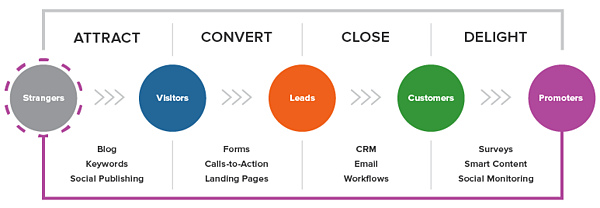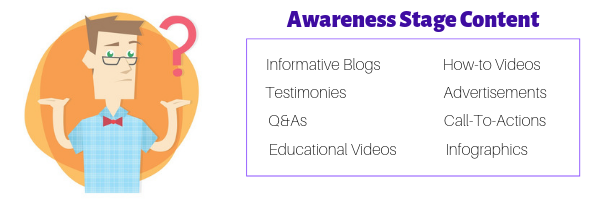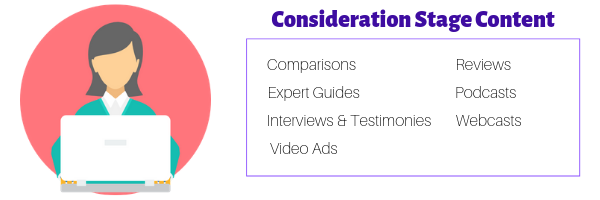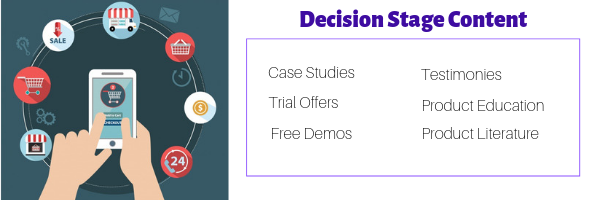A Complete Guide For Turning Leads Into Customers
Do you really know who you are selling to? Sales isn't about selling to strangers, it's getting to know someone before you make the sale.
Understanding their needs, challenges, trials and crafting the product in a way that will benefit their lives.
With some helpful data and information about a person, you can eliminate wasted time selling to cold leads, and learn how to identify hot ones ready to purchase.
A business that offers a product or service to the public will need to work hard to remain competitive in the current business landscape.
One of the necessary aspects of effectively engaging a target audience is through lead generation.
The aim is to turn a qualified lead into a customer who is satisfied and might offer repeat business and/or potential word-of-mouth referrals.
It is imperative to focus on the process of effective lead generation and build a plan as to how you will turn those leads into customers.

The Difference Between A Lead And A Customer
A lead is data on a potential buyer, whether it be individuals or other businesses, that will allow a company offering relevant products or services to contact them and provide additional information about their offerings.
Leads are filtered based on several criteria areas, including demographics, previous interests, engagement, clicks, etc.
Software, analytics, websites all can generate leads as well as when the potential buyer submits their contact form to request additional information from you.
Several methods may be used in the effort to generate leads, which makes it easier than ever to discover potential customers that wouldn’t normally find a company organically.
These are the three types of leads you should get familiar with so you can recognize them later on.
1. Information Qualified Lead (IQL)
This is the stage when the lead exchanges their contact information to sales in return for further information about the company or requesting a demo.
Your lead wants to learn more about what you do and how you can benefit them, hence they become a Information Qualified Lead.
They are still a cold lead, requesting information from you about the company such as case studies, eBooks, catalogs, testimonies,etc.
2. Marketing Qualified Lead (MQL)
Your marketing team should supply your leads with informational guides/eBooks they can download to learn more information about the products/services.
Once these leads become more interested and download information, they become a Marketing Qualified Lead. It is the marketing teams job to show your leads how your business can solve their problems and/or how they will benefit by becoming a customer.
The more they look into this material and download in exchange for information, the more they grow as a lead, becoming a warm lead.
3. Sales Qualified Lead (SQL)
After being nurtured by the marketing team, the lead has reach their decision stage. This is the last part of their buyers journey and where you want to offer free demos, trials, consultations, and testimonies. They are now a hot lead.
You don‘t want to skip a beat during this stage, meaning you should have faster follow-up times and pay close attention to everything they are doing/requesting from you.
After all the stages are complete, they are now your customer. In contrast, a customer is someone who has been directly in contact with a company, whether it be through email, mail, or in person.
Once the lead has been converted to a customer, it is the duty of the company attempting to make a sale to provide the customer with all the information and answers they need to feel informed.
Customers who feel well-informed are more likely to move forward with a transaction.
Understanding Your Buyer’s Journey
The buyer’s journey is a term referring to the process the lead will go through while being converted into a customer.
These are the steps that the vast majority of individuals and businesses will follow from discovering your offerings to deciding on whether to make a purchase.
A lot of marketing teams over look this journey and continue to build content, posts, landing pages etc. that aren’t tailored to each step and do not match the workflow of their customers.
90% of the time, customers follow this pattern of awareness, consideration and decision making before purchasing a product.
The buyer’s journey follows three stages:
#1 Awareness stage
In this stage, the potential customer discovers the product or service your company is offering to them and learns more about their benefits and why it is a good fit for their needs.

Your goal is to create enough content to generate a lead, increase their interest, engagement, click-through rates, and overall awareness of your brand. Your marketing has done its job and made its way in front of someone, but it’s not done yet.
In this stage, you want to make sure you answer these questions for your clients
- Who are you and what do you do or sell
- What are your company values
-What solutions can you solve for your customers
- How can you improve their lives
During this stage there should be no pressure to sell to your audience, but introduce yourself and let them get to know you.
He or she will have typically typed a search term into Google to have landed on your website, never hearing of you before now.
They will, hopefully, then be exposed to something that provides a solution to a felt need, and the material presented should, therefore, be clear and easy to understand.
There may be competition because yours is likely not the only resource they have encountered in their search.
The best way to eliminate competition is to know the questions and answers they are looking for before your buyers do. To learn how to do this, check out how to create your very own buyer personas.
Throughout this stage you will want to put out a lot of content that answers their questions.
Here are a few ideas of what you should promote:
- Informative blog posts
- Q&As
- Testimonies from clients
- Educational and how-to videos
- Advertisements
-Call to actions
- Infographics easy to understand and share
- Social media posts
#2 Consideration stage
This is probably the toughest stage to get through.
Your leads are considering whether they will make a purchase; in this stage, it’s your job to convince them why you are the right solution.
This is also the research stage, when they will be comparing other products to your own, looking at competition, comparing prices, anything to get them the best deal.

This stage is all about reviews, brand trust, reputation and comparison between different solutions.
They want to find the solution to their problem, but they aren’t certain on where they should turn to yet.
This is your time to get to know they problems and answer it. Make them do as little research as possible even if that means creating a comparison list between what you offer verse other companies.
By putting everything they need in one area and making it easier to access, they are likely to turn to your company. Even if in your review the other company proved to be a little stronger, you made life easier for them and will generate in their minds as trustworthy, efficient and helpful.
What are they going to decide?? If they made it to this stage, they are ready to purchase your services/product and become a customer, you just need to seal the deal.
Prove to them they aren‘t making a mistake. You want to confirm all their questions or anything they might be on the fence about.

Content that has proven most effective in this stage are the following:
- Case Studies
- Trial offers
- Free Demos
- Testimonies
- Product Education
This type of material is your way of presenting evidential support as to why you are the best of the best. Brag, get cocky and show off, don‘t hold back.
Show them why they should go with you.
Plan A lead Generation Strategy
There are many ways available to generate leads thanks to our advancing technology. Using a combination of methods will ensure you can reach a wider audience and get your brand noticed.
Some examples of proven techniques include email marketing, blog posts, regular social media posts across several popular platforms, and promotional offers.
These are just a few to consider incorporating into your efforts to generate more leads and increase overall interest.
- Using Call-To-Actions
- Creating forms/pop-ups in exchange for information
- Cold Calling
- Follow-ups
- Email Marketing
- Creating infographics
- Creating free information ebooks/guides
- Lead Scoring
Many companies elect to delegate their lead generation campaign and marketing efforts to a third party to help free up their internal manpower.
There are many companies out there specializing in marketing and lead generation that can also convert leads into customers easily.
Consider working with one of these companies to maximize your reach and allow your team members to work on other aspects of business if needed.
You may need to research all the options to find a digital marketing company or strategy that works for you.
Make Conversion Easy For Your Customers
Once a customer has made a purchase, make sure that the buying process is easy and user-friendly.
A great way to make it easier for customers to complete a transaction is to offer multiple payment methods online.
Visa
Mastercard
PayPal
Discover
American Express
You can also add other payment methods such as digital check and payment services such as Google Wallet and Dwolla.
In addition, it is also helpful to have a phone number to call close to check-out if they encounter any issues during the payment process so they aren't deferred from completing the purchase.
Customers respond positively to companies who offer a live operator or chatbot to assist them with any issues during a transaction or to answer questions and concerns they may have about your product or service.
Most companies opt to offer 24/7 help for people who may be located in other countries or who work unconventional hours.
Use this information to help guide you through the process of lead generation and then turning your leads into loyal customers.
Companies who focus on reaching out to get their brand in front of a wide audience and then refining their approach to conversion will grow and prosper in competitive markets of all types.
For more information about modern marketing and building a relationship with customers, check out the Purplepass website and blog where you will find a wealth of information as well as products and services to help you get the most out of your marketing and ticketing efforts.







